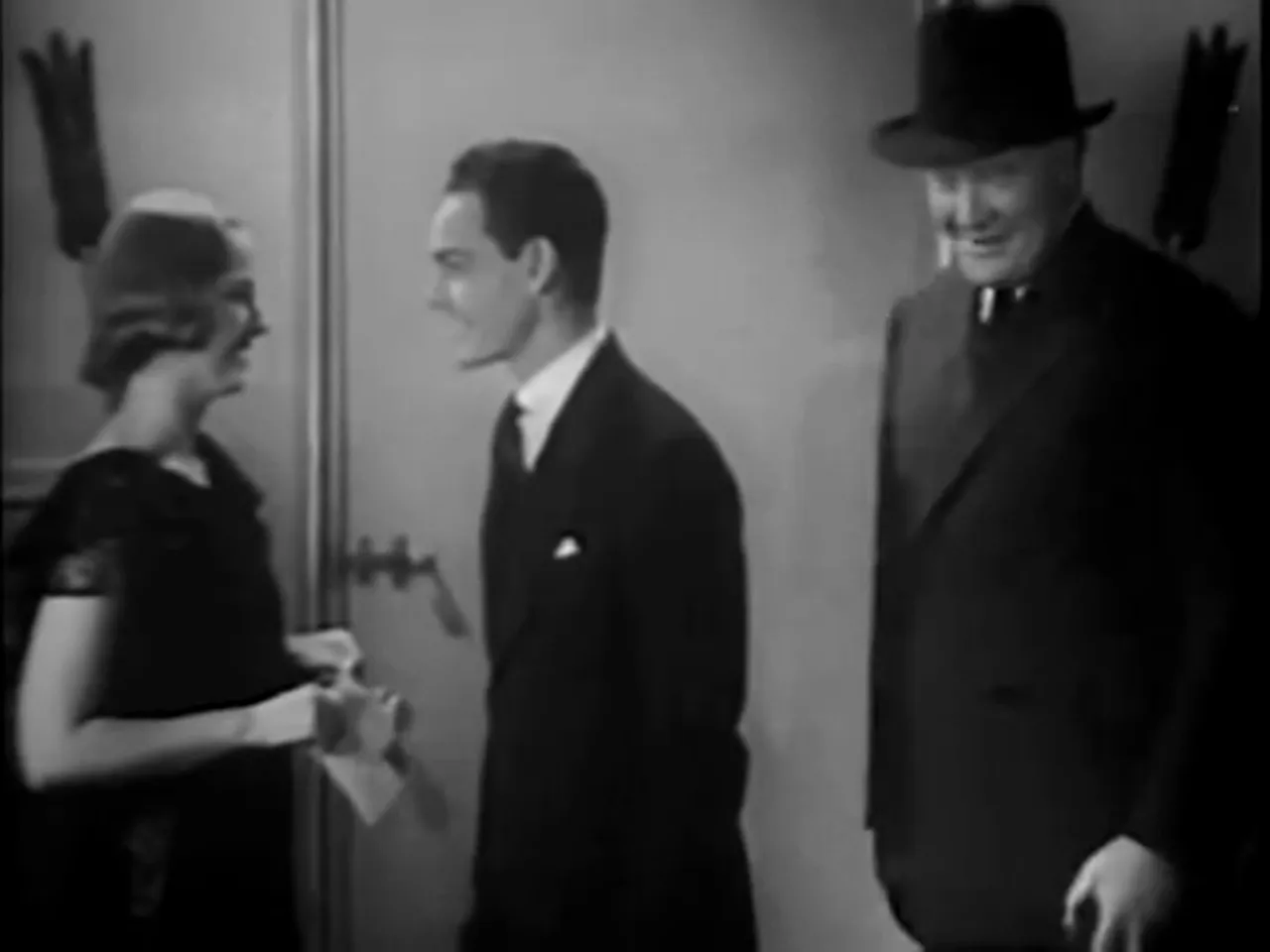In examining The Mandarin Mystery (1936), directed by Ralph Staub and produced for Republic Pictures, the critic approaches the film as an artifact that resonates with aspects commonly associated with a film noir movie even though it predates the canonical noir cycle. This appraisal draws on the available script-like record of the picture and the contemporary documentation preserved in public sources, considering how a compact 66-minute crime feature works both as a thirties-era mystery and as an incipient cousin to what critics later labeled a film noir movie. The Mandarin Mystery is loosely based on the Ellery Queen novel The Chinese Orange Mystery and assembles a tightly staged whodunit that pivots on stolen philatelic treasure, double-crossing counterfeiters, and an amateur sleuth who is equal parts writer and investigator.
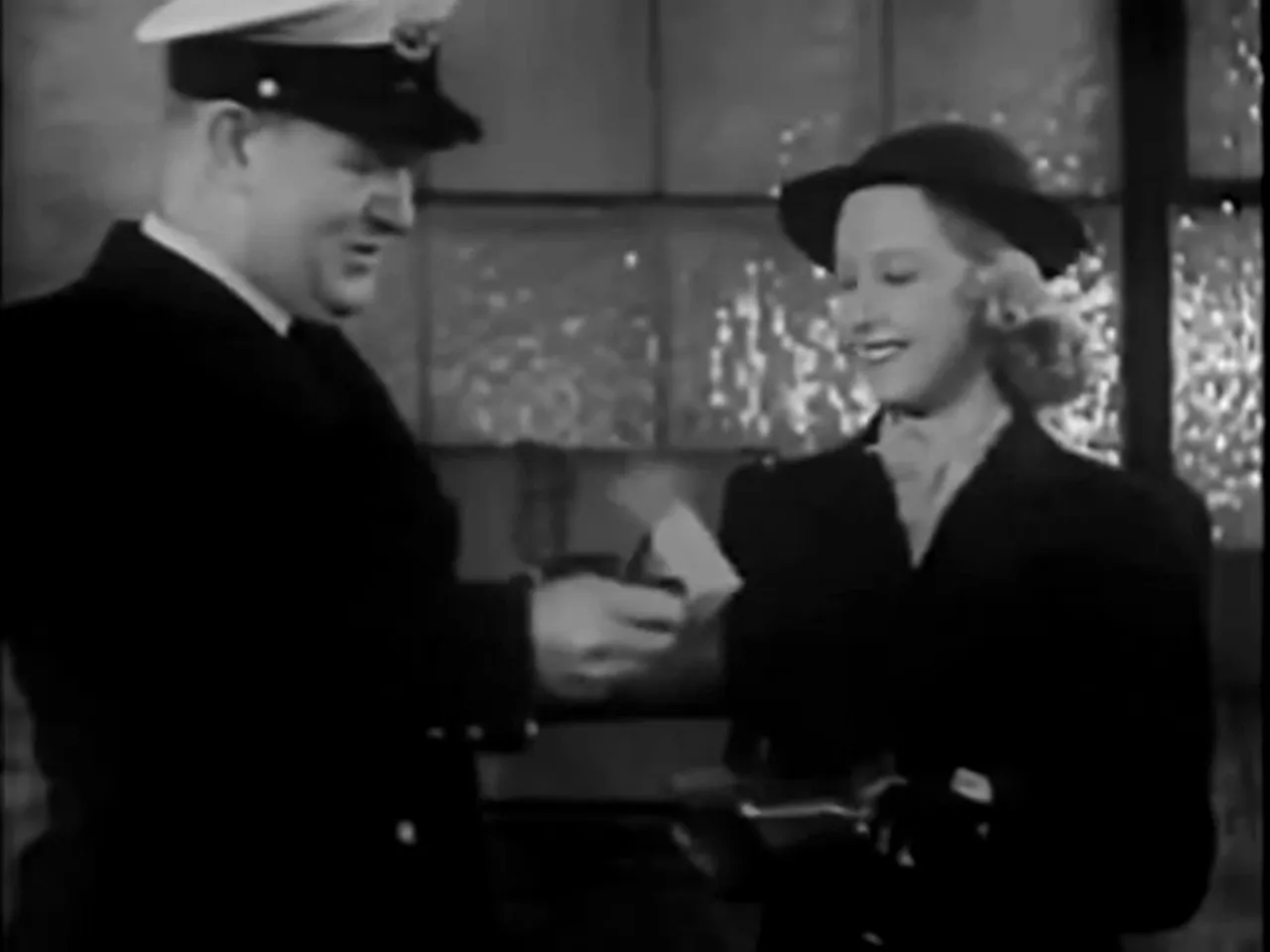
Outline of the appraisal
- Introduction and provenance: positioning The Mandarin Mystery in the 1930s mystery canon and in relation to a film noir movie aesthetic.
- Plot synopsis: a close, scene-by-scene reading that follows Ellery Queen’s deductions and the stamp that triggers murder and false leads.
- Character and performance analysis: Ellery Queen, Inspector Queen, Josephine Temple, Dr. Kirk, and the supporting players.
- Direction, screenplay and adaptation: Ralph Staub's approach and how the screenplay stitches together elements from the Ellery Queen source.
- Visual and technical elements: composition, staging, cinematography by Jack A. Marta, and editing by Grace Goddard in service of a film noir movie feeling.
- Themes and motifs: greed, artifice, public spectacle, and the counterfeit—motifs that anticipate a film noir movie’s preoccupation with moral ambiguity.
- Set pieces and notable sequences: the stolen stamp, the dressing of the corpse, the tangerine alibi, and the final unmasking.
- Legacy and viewing considerations: why contemporary audiences and classic cinema devotees should revisit this piece when tracing the lineage of a film noir movie.
- Conclusion: a summative judgment and an invitation to re-evaluate the film’s position in classical-era crime cinema and its affinities with the film noir movie idiom.
Introduction: provenance, promise, and the pull of a film noir movie lineage
The Mandarin Mystery emerges from 1936, an era when American studios were churning out mystery features as dependable program fare. Under the direction of Ralph Staub and a screenplay shaped by several hands, the film was conceived as a cinematic rendering of Ellery Queen’s sleuthing adventures; it foregrounds antique collecting, counterfeit trades, and an escalating body count centered on a single object—the $50,000 Chinese Mandarin stamp. The critic frames the film as a text that, while not a film noir movie by strict periodization, contains in its mise-en-scène, moral ambiguity, and shadowy transactions many discrete elements that later became hallmarks of the film noir movie.
From its opening arrival scene—where Josephine Temple’s carriage and the curious eyes of collectors and press converge—The Mandarin Mystery stages a brisk drama of possession and desire. The plot’s spine is simple: a unique philatelic rarity, its theft, and the violent scramble to monetize or conceal it. Yet the execution is produced with a tightly wound sense of surfaces and subterfuge: cover stories, counterfeit stamps, false alibis, and staged spectacles. Those features, read together, make a persuasive case that the film aligns aesthetically and thematically at crucial points with the sensibility of a film noir movie.
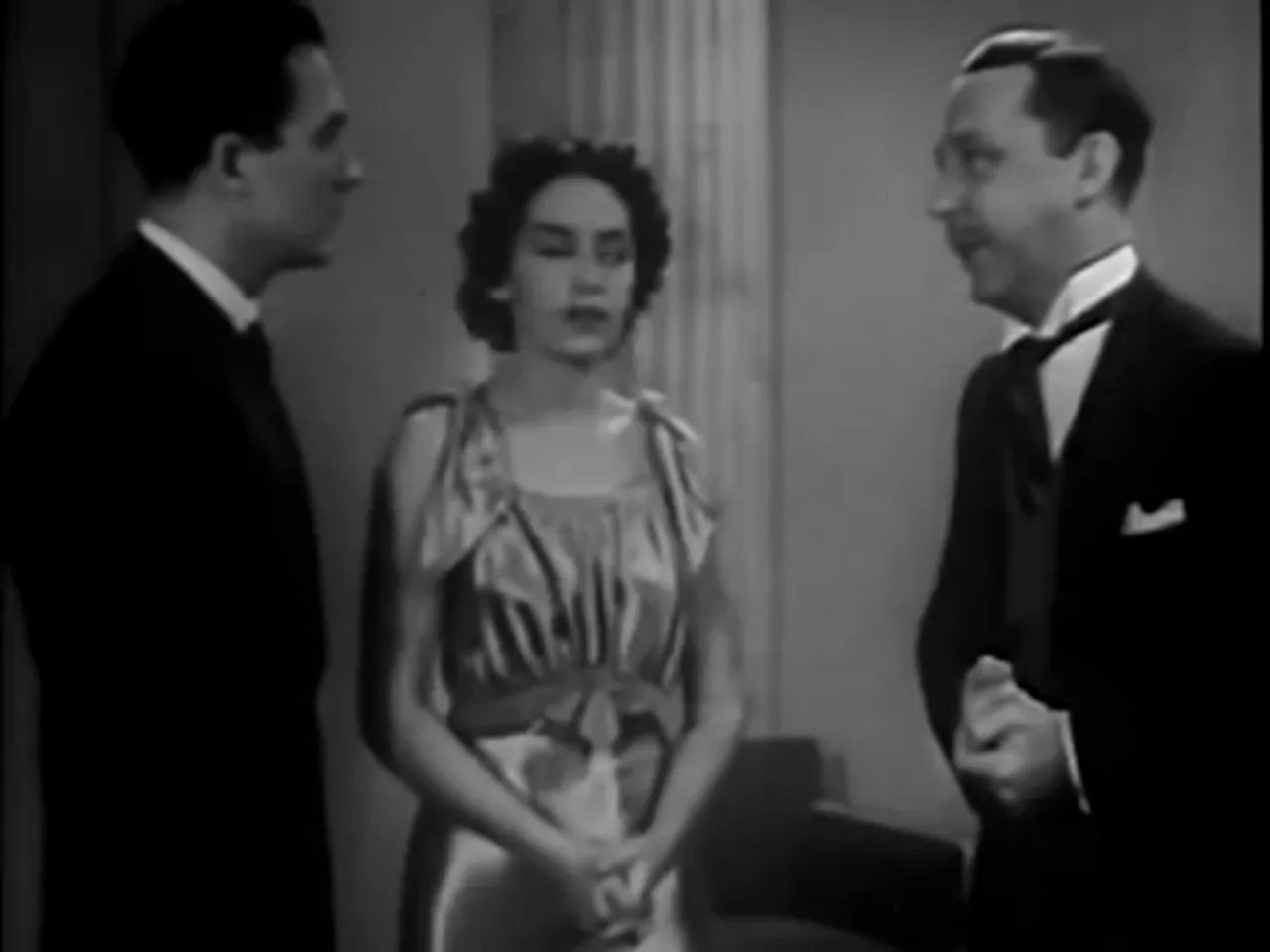
Plot synopsis: possession, counterfeit, and two murders
The film’s narrative commences with Josephine Temple arriving with the Chinese Mandarin, the lithographic jewel in any collector’s eye. She intends to sell the stamp; Dr. Alexander Kirk, a collector and guardian figure, is prepared to buy it. A number of parties orbit this transaction: Rowan & Company, an ostensibly reputable stamp dealer; the hotel staff and its manager; a cast of fortune-seeking acquaintances; and Ellery Queen himself, the mystery writer with a detective’s instincts. As the narrative escalates, the stamp’s theft triggers chaotic attempts to trace its whereabouts.
Early episodes of the story focus on negotiation and publicity: the press seeks portraits, dealers jockey for bids, and the stamp becomes less an object of love than an object of exchange. That transition from aesthetic object to monetary instrument is where the film finds its primary tension. The Mandarin stops functioning as a rare artifact and begins functioning as currency, or even as a catalyst for criminal enterprise. In that conversion—art into capital—resides much of the film’s moral inquiry, a theme compatible with the darker preoccupations of a film noir movie.
Violence intervenes in the middle act: a man named Craig, tied into counterfeiting and the illicit trade in duplicates, is found dead. The corpse is staged in an odd fashion—clothes reversed, body made rigid by the insertion of spears—an arrangement repeated symbolically in the film’s stamp imagery (the Chinese Mandarin’s figure is itself reversed on the print, an engraving error that suggests duplication and error). Following the discovery, Inspector Richard Queen moves the investigation into motion, while Ellery Queen, played as a young and street-smart amateur sleuth, pursues leads that reveal counterfeit dyes, suspicious catalogues, and a syndicate with three participants.
As the detective work progresses, a second murder compounds the stakes: Martha Kirk—tied into the household where the stamp was kept—falls to a fatal shot. Her death serves as both an escalation and a clue. Ellery pieces together a highly specific set of actions used by the killer to create a public alibi and to advertise the theft in a way that maximizes criminal returns. The methods—washing blood with tangerine juice, hiding the stamp behind a picture, dressing a dead man backward in imitation of the engraved Mandarin—are cinematic in their grotesque cleverness and operate like stagecraft intended to advertise the theft, not merely conceal it. The final unmasking resolves around motive (profit through counterfeit sales), method (staging, alibi, and misdirection), and the dead man’s role as both a participant and a victim.
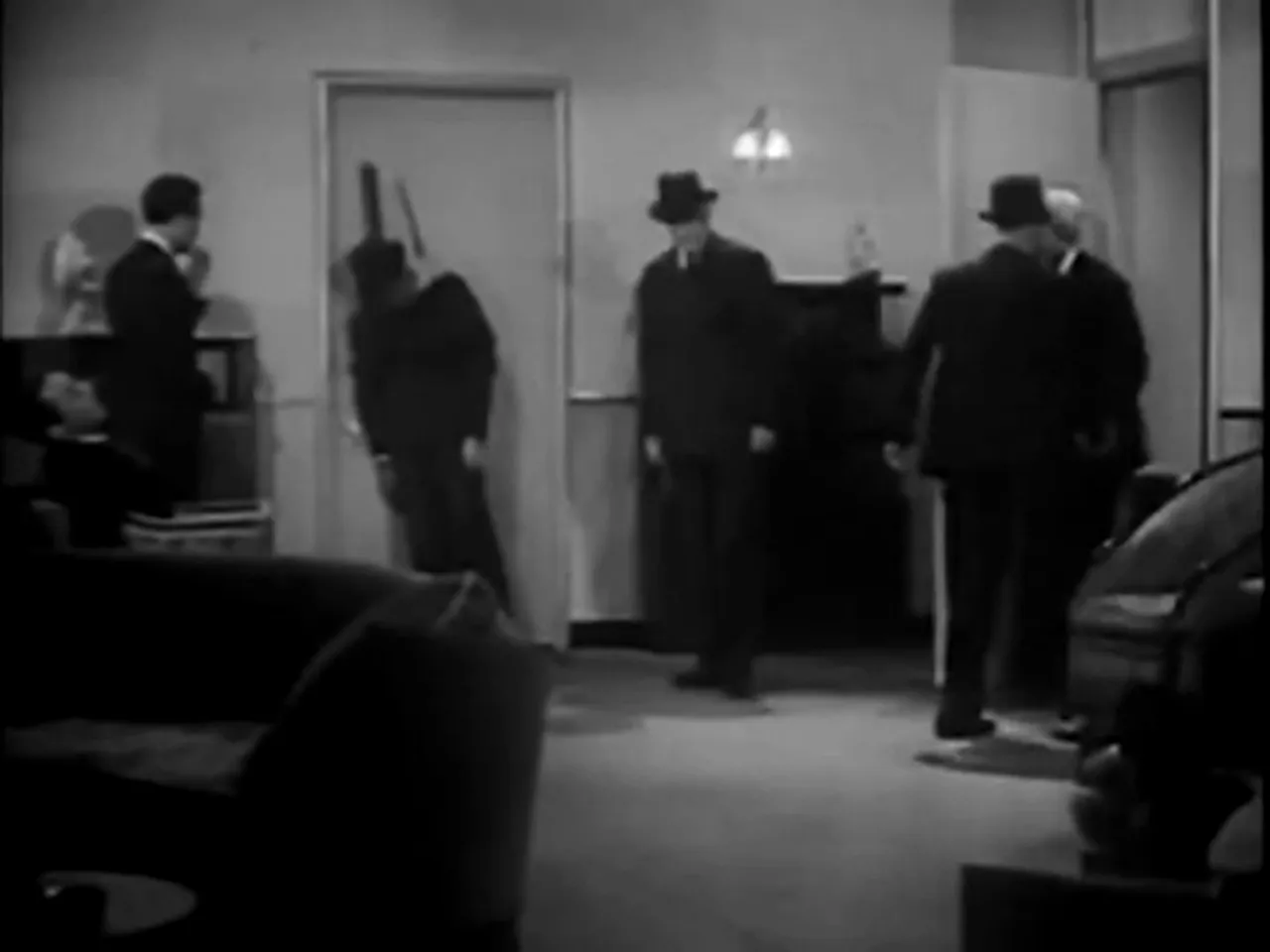
Key beats and structural choices
- Arrival and negotiation: Josephine Temple’s intended sale to Dr. Kirk—introducing the stamp as both symbol and stimulus.
- Publicity and pressure: the press, hotel staff, and dealers create a crowd-sourced urgency that accelerates events.
- Theft and first murder: the discovery of Craig’s body, dressed oddly, which inaugurates the homicide inquiry.
- Counterfeiting clues: dyes, catalogs, and an industry of imitation that reveal an organized attempt to monetize replication.
- The tangerine alibi and the staged corpse: theatrical elements that function as both clues and commentary on publicity.
- Final exposition: Ellery Queen demonstrates the killer’s methods and exposes the ring of counterfeiters, resolving the plot.
Characters and performances: detection and dramatic counterpoint
The Mandarin Mystery assembles a compact ensemble that balances comic relief, institutional authority, and sentimental vulnerability. Each character performs an essential function in the narrative economy, and the performers, working within the constraints of a 1930s production schedule and economy, deliver distinct, recognizable types.
Ellery Queen (Eddie Quillan) is configured as both mystery writer and amateur sleuth. The performance emphasizes curiosity, youthful impatience, and a self-possessed intelligence that blends book-learning with street instincts. He is the engine of the film’s detection: inquisitive, impatient, and defiantly creative in his experiments. Ellery’s methods—staging an experiment in front of his father and guests—reinforce his role as the demonstrative mind at the center of the investigation. This mode of detection speaks to a cinematic style that multiplies theatricality and rational deduction, resembling how a film noir movie will later foreground character ingenuity in seedy scenarios.
Inspector Richard Queen (Wade Boteler) plays the formal, institutional foil to his son. The inspector contributes procedural authority and old-style law enforcement, but also displays a mixture of pride and exasperation in response to Ellery’s intrusions. Their exchange is a classic detective–amateur dyad, a tension that propels the film’s interpretive momentum: the formal investigator represents the law’s measured instruments, while the amateur provides interpretive leaps and symbolic theatricality.
Josephine Temple (Charlotte Henry) is the young ward whose fortune hinges on the stamp. Her presence introduces the film’s emotional stakes: the stamp is not merely a commodity but a vehicle for social mobility and family security. The performance registers vulnerability and integrity, and the character’s choices—where she places the stamp, whom she trusts, and how she reacts under interrogation—animate much of the film’s moral landscape.
Dr. Alexander Kirk (George Irving) is the benefactor with the stamp room and a circle of dependents; he is both collector and guardian. Notably, the drama reconfigures his role into a more suspect posture as the plot advances. The character functions as an emblem of professional sophistication, but coupled with moral compromise in the film’s final exposition.
Howard Bronson (Edwin Stanley) serves as the trade figure: the stamp dealer with a manager’s savvy. His involvement with forgery and the black-market distribution of counterfeit stamps places him within the film’s commercial engine—an intermediary who navigates the space between respectability and illegal commerce. Through Bronson and his connections, The Mandarin Mystery of the 1930s stages an organized attempt to weaponize rarity and scarcity—the same impulses that underpin the darker realms of a film noir movie.
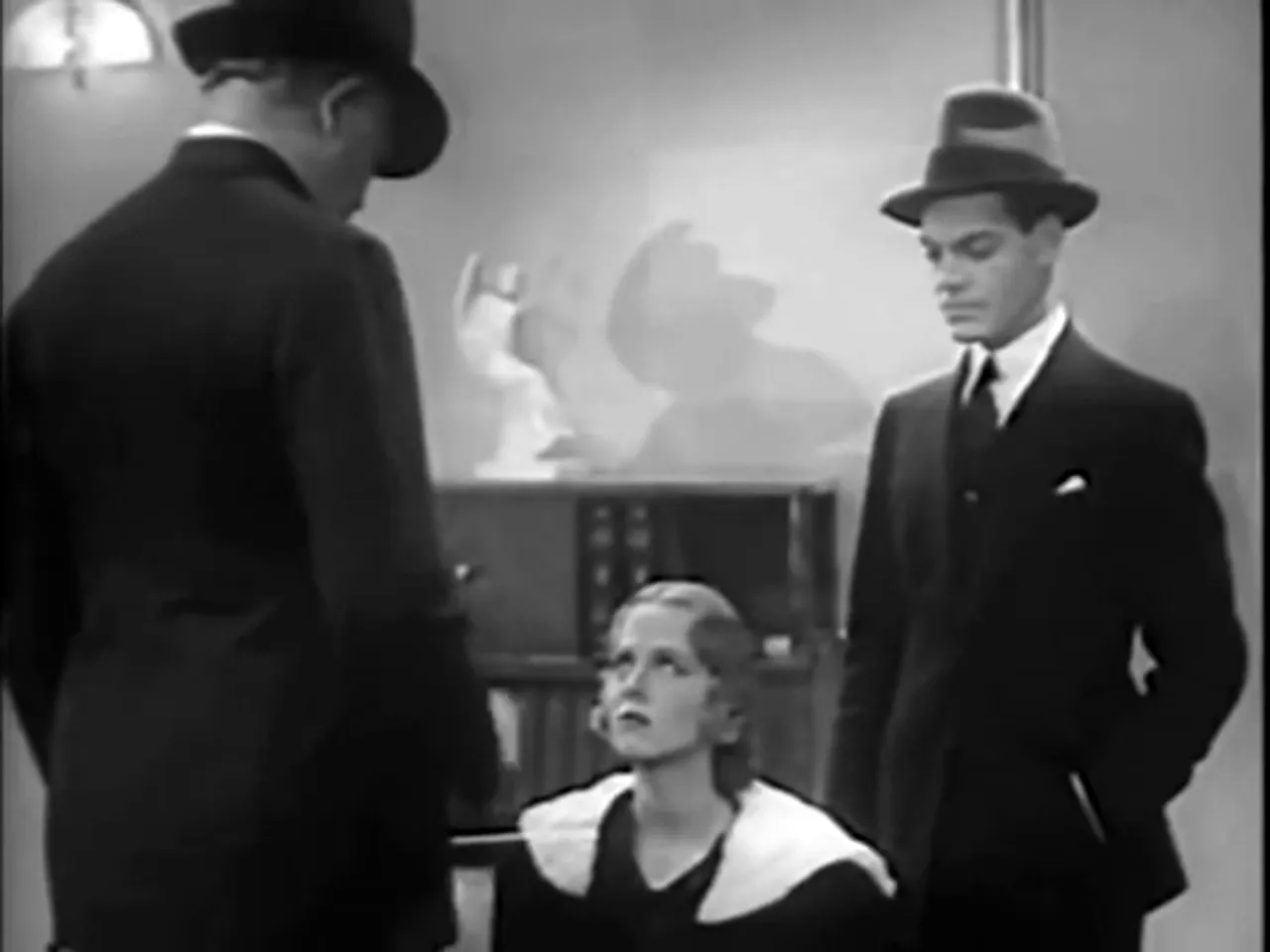
Supporting roles and tonal balance
Franklin Pangborn’s hotel manager, the comic flourishes, and the surly detectives around the margins provide a textured background. The film’s minor characters—reporters, porters, and hotel staff—represent institutions of publicity and commerce that shape the plot’s economy of attention. This attention economy is crucial to the film’s core conceit: theft is not merely a private rupture but a public performance aimed at creating demand and value. These supporting roles contribute to a tonal balance that oscillates between earnest detection, farce, and melodramatic danger.
Direction and screenplay: Ralph Staub and the puzzle-play structure
Ralph Staub’s direction, coupled with a screenplay assembled from a story credited to Frederic Dannay and Manfred Lee and script contributions, results in a film that privileges plot architecture and schematic deduction. The director stages conversations and small vignettes with an economy that keeps the narrative brisk. There is little waste here: beats arrive and depart quickly, and the camera generally favors clear staging to ensure that the puzzle’s clues are legible to both characters and spectators.
This structural clarity speaks to a particular mode of adaptation. Because the film is “loosely based” on The Chinese Orange Mystery, the screenplay condenses and reconfigures narrative material to fit a program-length feature. The result is a streamlined mystery in which objects—stamps, catalogs, dyes, spears, and tangerines—function as tangible evidence. Staub’s directorial choices favor legibility and crowd management: hotel lobbies, stamp rooms, and intimate parlors are choreographed in ways that allow action and deduction to proceed without obfuscation. That clarity can sometimes reduce atmospheric density, but it serves the film’s central puzzle-oriented project.
At the same time, Staub and the writing team insert theatrical flourishes—public announcements, staged experiments, and an overt final demonstration—that suggest a confidence in the audience’s appetite for methodical revelation. This performative approach to detection anticipates how later crime films (including many labeled a film noir movie) situate revelation as performance: the crime is not merely solved; it is demonstrated, and the demonstration functions as a moral and social adjudication.
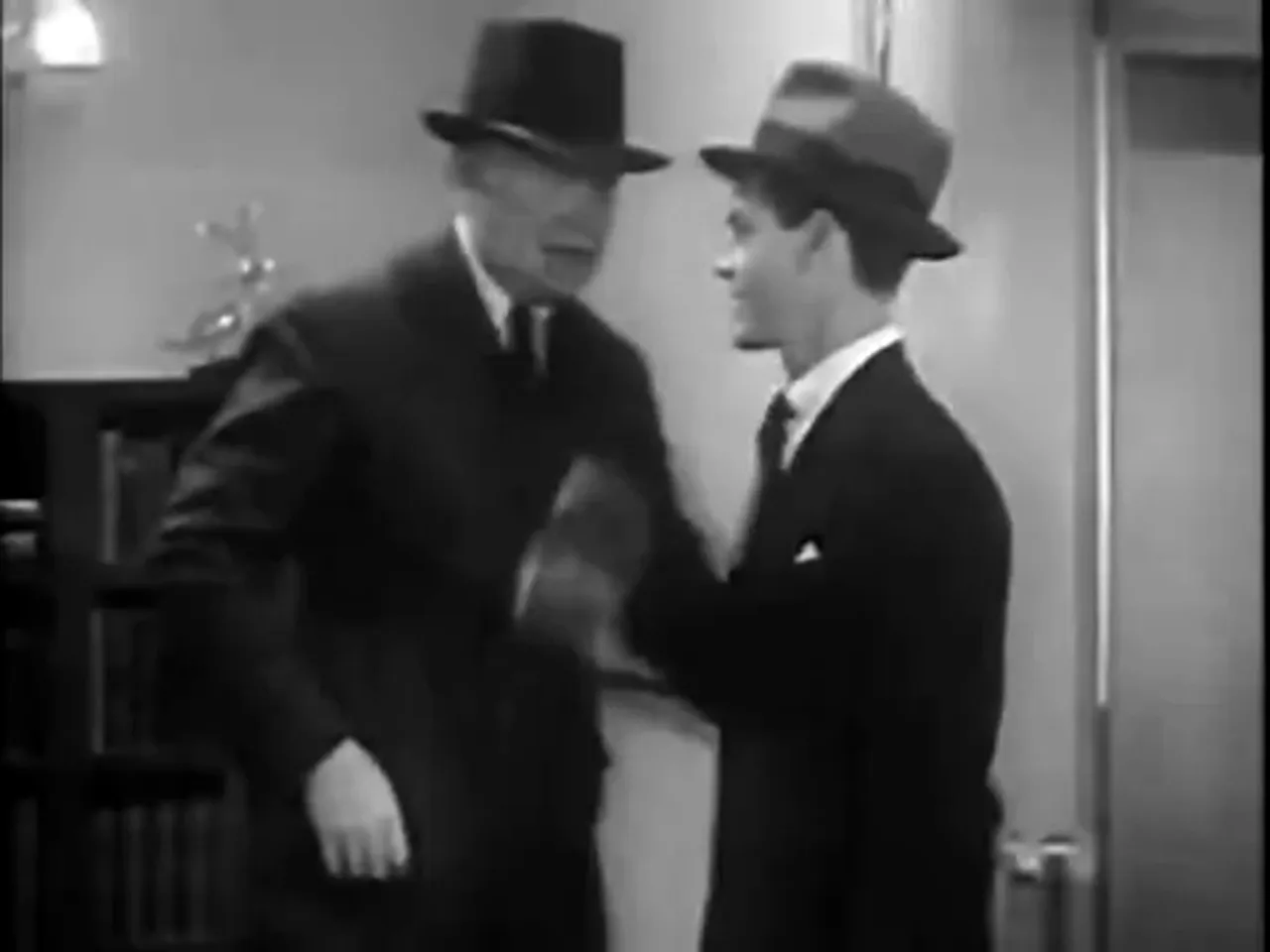
Visual and technical elements: cinematography, editing, and the look of early noirish tension
Jack A. Marta’s cinematography provides the film with a competent, sometimes striking visual texture. While the movie operates within the technical possibilities of mid-1930s studio practice, there are moments when light and framing produce a shadowy sense that feels adjacent to a film noir movie. Close-ups of the stamp, the staging around the dead body, and the library terrace at night combine practical theatrical lighting with more expressive tonalities. These moments remain restrained, however, favoring clarity—shadows are used as functional emphasis rather than as persistent mood shading.
Grace Goddard’s editing facilitates a brisk tempo. The film’s 66-minute running time forces a compression of narrative logistics, which Goddard achieves through concise cuts between investigative interrogation, discovery, and private counsel. As a result, the film rarely lingers: clues are revealed, responded to, and then pushed forward. That economy of editing enhances suspense and keeps the viewer aligned with Ellery Queen’s curiosity.
Moreover, staging and blocking play crucial roles in producing a noir-adjacent atmosphere. The repeated visual motif of the stamp and its reversed image—echoed in the corpse’s backward clothing—creates a small iconography that unifies plot and visual metaphor. When mise-en-scène and editing synchronize around this symbolic reversal, the film produces an uncanny visual rhythm not unlike the formal strategies later mobilized in a film noir movie.
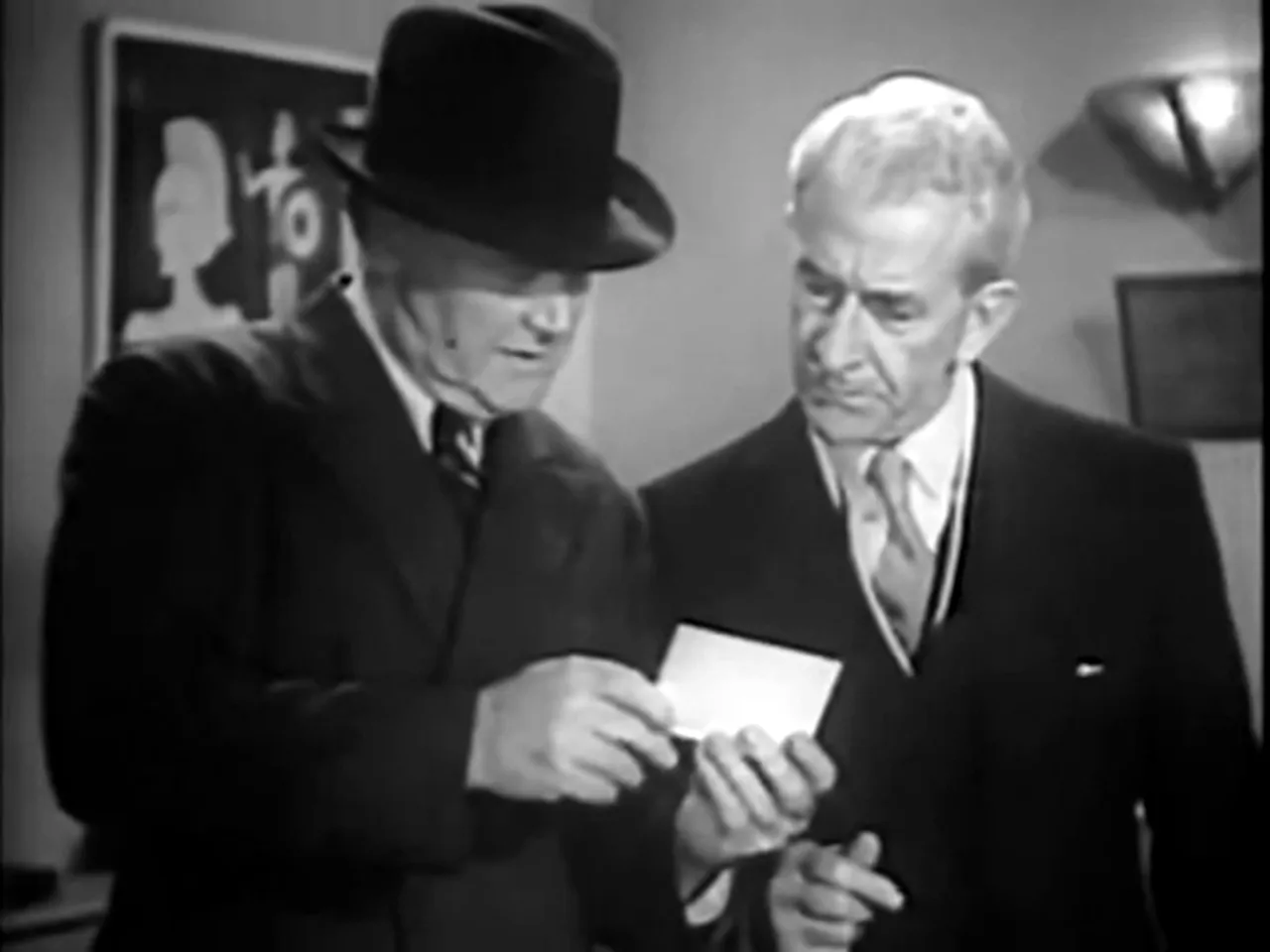
Themes and motifs: value, counterfeit, spectacle, and moral inversion
The Mandarin Mystery is preoccupied with value—both monetary and moral—and with the transformation of objects into commodities. The Chinese Mandarin stamp exists simultaneously as an object of admiration and as a unit of exchange. That duality drives the film’s ethical tensions: collectors’ reverence for artifacts collides with counterfeiters’ desire to monetize simulation. In exploring this collision, the film raises questions about authenticity and the social production of value, motifs that resonate with the ethical ambiguities a film noir movie would later amplify.
Counterfeiting itself functions as a metaphor for social disguise. The counterfeit stamps are not merely money-makers; they are acts of social camouflage. The criminals seek to replace the authentic with the deceptive, thus undermining trust and destabilizing reputations—precisely the kinds of social dislocations that noir cinema would make a central concern. The film’s use of public spectacle—most dramatically, the staging of a corpse dressed backward as if to match an engraved error—converts crime into performance art designed to create market interest in the theft.
Another motif is the tangerine, which functions as a small but crucial clue. The killer uses the fruit’s juice to remove blood traces and to create an alibi, a method that is at once clever and grotesque. This small, homey object used for forensic concealment yields a darkly comic strain: ordinary things become instruments of survival and complicity. The darker, more intimate uses of commonplace items is a thematic move that would later become characteristic of a film noir movie’s layering of the everyday with the sinister.
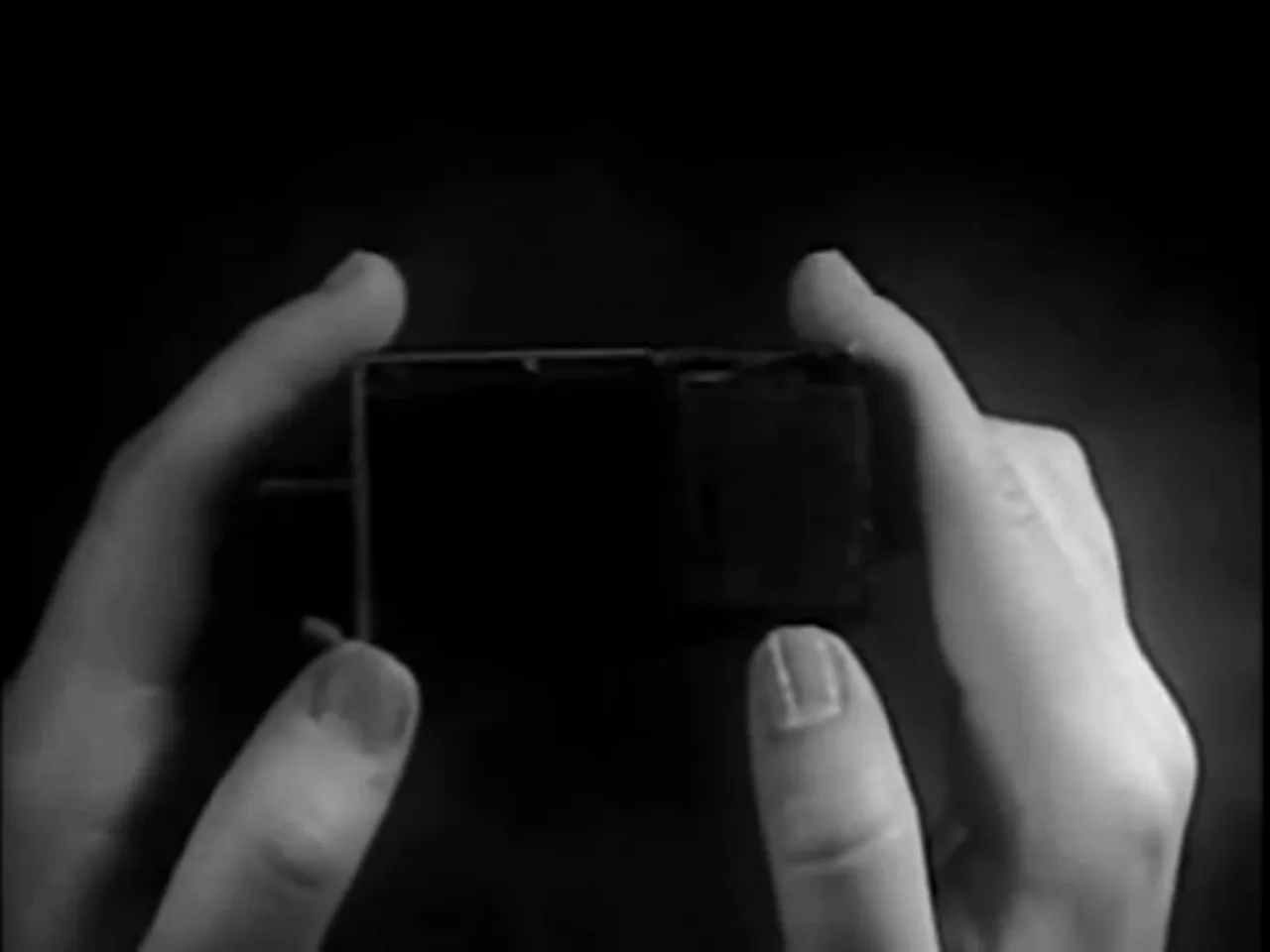
Set pieces and sequences worthy of note
Certain sequences in The Mandarin Mystery deserve close inspection because they reveal the film’s formal and thematic priorities. The following set pieces stand out for their inventiveness and for how they stage investigation as theatrical action.
The stolen object and the arrival scene
The opening movement—Josephine Temple’s arrival and the negotiations surrounding the stamp—establishes the object’s centrality. The camera frames her as both a person and a carrier of information: conversations flutter around her, and the press seeks to capture a photograph. This scene frames the social forces that will soon converge violently around the stamp and highlights how public attention can make private items into dangerous commodities. The set piece operates as a prelude for the spectacle that will follow and as an example of how social visibility can create risk.
The discovery of Craig’s body and the backward coat
The discovery scene is one of the film’s more grotesque visual conceits. The corpse’s clothing is reversed, and the body is propped using two spears to create a misleading impression of strength. Ellery Queen and Inspector Queen both fix on these oddities and interpret them as calculated misdirection. The act of dressing the body backward not only mirrors the engraving error on the Mandarin stamp but also becomes a symbolic inversion: the genuine is reversed, meaning is displaced, and the normal order of things is disrupted. This linguistic metaphor—reversal as obliquity—runs at the film’s core and creates a link to a film noir movie’s penchant for disordered moral codes.
The counterfeiting lab and dye discovery
Ellery’s search of Craig’s lodgings yields practical evidence: dyes and a Rowan & Company catalogue suggest an organized ring that manufactures imitation material. The lab scene is less about action and more about forensic reading—a quiet triumph of the detective’s eye. The film’s investment in this process—close-ups, the discovery of a bottle, the examination of dyes—signals its commitment to mystery as technique. In this sense, the film functions as a manual of detection: clues are physical, discoverable, and narratively consequential.
The staged experiment and the tangerine alibi
At a climactic moment, Ellery stages a public experiment that reconstructs the killer’s procedures: he demonstrates how the murderer dressed the corpse, propped it, removed blood traces with tangerine juice, and hid the stamp behind a picture. This dramatic reconstruction is theatrical, persuasive, and cinematically satisfying. It converts detection into an enacted pedagogy: everyone witnesses how the crime was staged and thereby understands both method and motive. This performative reveal is a lineage to a film noir movie’s rhetorical climax—truth as performance rather than mere pronouncement.
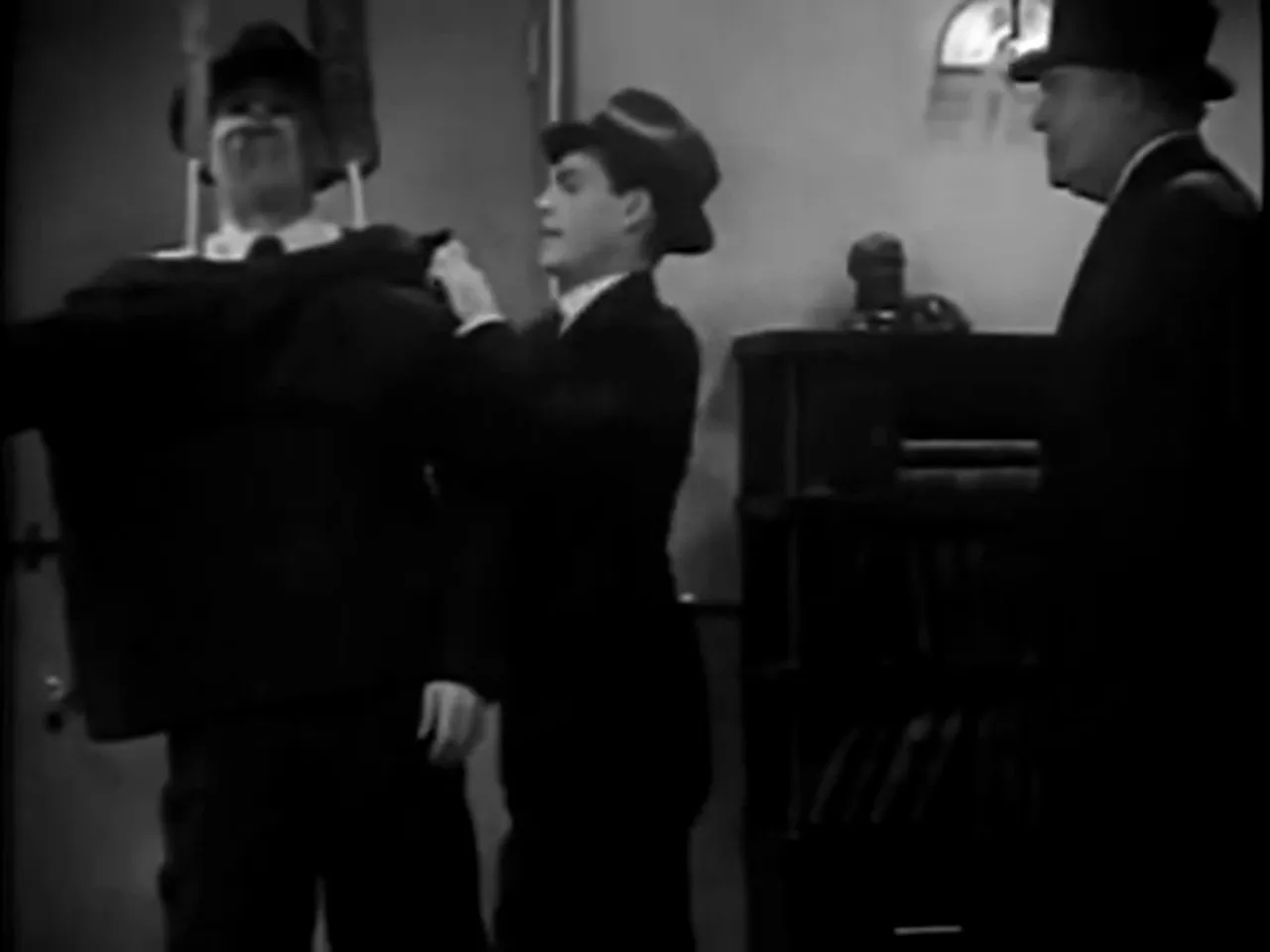
Adaptation and authorship: Ellery Queen’s literary lineage and cinematic adjustments
The Mandarin Mystery credits its origins to an Ellery Queen story and novel lineage, yet the film’s screenplay necessarily compresses and reshapes material. The novel The Chinese Orange Mystery is a classic locked-room puzzle in print, and the film translates that locked-room motive into a more open social scene: hotels, rooms, and parlor confrontations. Adapting a detective novel for the screen entails tradeoffs: interior monologues become staged confrontations, exposition becomes demonstrative experiments, and narrative patience is often sacrificed for pace. The film’s writers and Ralph Staub balance these pressures by foregrounding objects and procedures: the stamp, the dyes, the reversed coat. They preserve the novel’s appetite for clever contrivance while converting its intimacy into a public drama.
Ellery Queen’s identity as a writer-detective in the film is essential to the adaptation strategy. By making Ellery an author figure who solves puzzles, the film preserves the novel’s epistemic modality—intellectual deduction—while granting the camera opportunities for visual demonstration. That translation works to the film’s advantage: detection becomes spectacle and the audience receives the intellectual payoff in visible form. This technique anticipates methods later used in films labeled a film noir movie, where the detective’s revelation is both cognitive and performative.
Comparative note: why The Mandarin Mystery resonates with a film noir movie sensibility
Calling The Mandarin Mystery a film noir movie outright would be historically inaccurate; the film was produced before the surge of noir style in the 1940s. Nevertheless, the critic argues that the film shares thematic and stylistic seeds with what will be recognized as noir: compromised institutions, moral ambiguity, the commodification of beauty, and a world where public spectacle is weaponized for private gain. The film’s economy—where an object incites desperate acts—and its interest in the mechanics of deception connect it to noir’s preoccupations.
Key affinities with the film noir movie profile include:
- Moral ambivalence: characters who operate in unclear ethical zones, such as collectors who profit from counterfeits and dealers who straddle legal and illegal markets.
- Urban undercurrents: the city is not merely backdrop but a market where reputation and artifacts can be monetized or ruined.
- Artifice and disguise: counterfeiting is literal disguise and metaphorical for social performance; a film noir movie often dramatizes appearance versus reality.
- Detective centrality: Ellery’s investigative theatricality stages truth as arithmetic and performance, much as a film noir movie will later stage detection as both revelation and personal reckoning.
Through these modalities, The Mandarin Mystery furnishes a small but meaningful link in the genealogy of American crime cinema. It demonstrates how pre-noir features—economies of desire, the degradation of value, and public spectacle—feed into the motifs later formalized under the rubric of a film noir movie.
Production context and craft: cinematography, editing, and studio economics
Produced by Nat Levine with associate Victor Zobel and distributed by Republic Pictures, The Mandarin Mystery is a compact studio vehicle that exerts craft where budgets permitted. Jack A. Marta’s cinematography favors clarity and occasionally invests in expressive angles when clues or mood demand them. The editing by Grace Goddard enforces a swift rhythm that aligns with the running time, and the film’s staging relies on small, clearly readable sets—hotel lobbies, stamp rooms, and parlor interiors—that function as both social arenas and theatrical stages.
The production’s constraints produce advantages: the need to economize leads to a distilled narrative that foregrounds method and object rather than prolonged melodrama. The result is a film that reads to the eye like a well-constructed puzzle box. While it lacks the high-styled chiaroscuro associated with later noir, the film’s visual economy channels attention to what matters: clues, gestures, and the symbolic inversion of image and object. Those priorities align the picture with an investigative ethic that contributes to the film noir movie’s later concerns.
Reception, availability, and afterlife: a modest classic for collectors and cinephiles
Records show that The Mandarin Mystery was released December 23, 1936, running 66 minutes in its original release and a shorter edited version available at 53 minutes. The film’s compactness likely shaped how audiences and exhibitors received it: as program fare, a dependable, entertaining crime puzzle rather than as a prestige picture. No soundtrack album was created for the film, and its afterlife has been that of the serially collectible: available through sources such as the Internet Archive and listed on film databases for classic movie enthusiasts.
For contemporary viewers and specialists in classic cinema, The Mandarin Mystery offers particular pleasures: the chance to observe how a mid-1930s mystery constructs public spectacle around a central object, the neatness of a detective’s staged demonstration, and the film’s small-scale formal ingenuity. It occupies a place in film history as a minor but instructive work: not a canonical film noir movie, yet sufficiently noirish in mood and method to reward those tracing the evolution of crime cinema’s darker sensibilities.
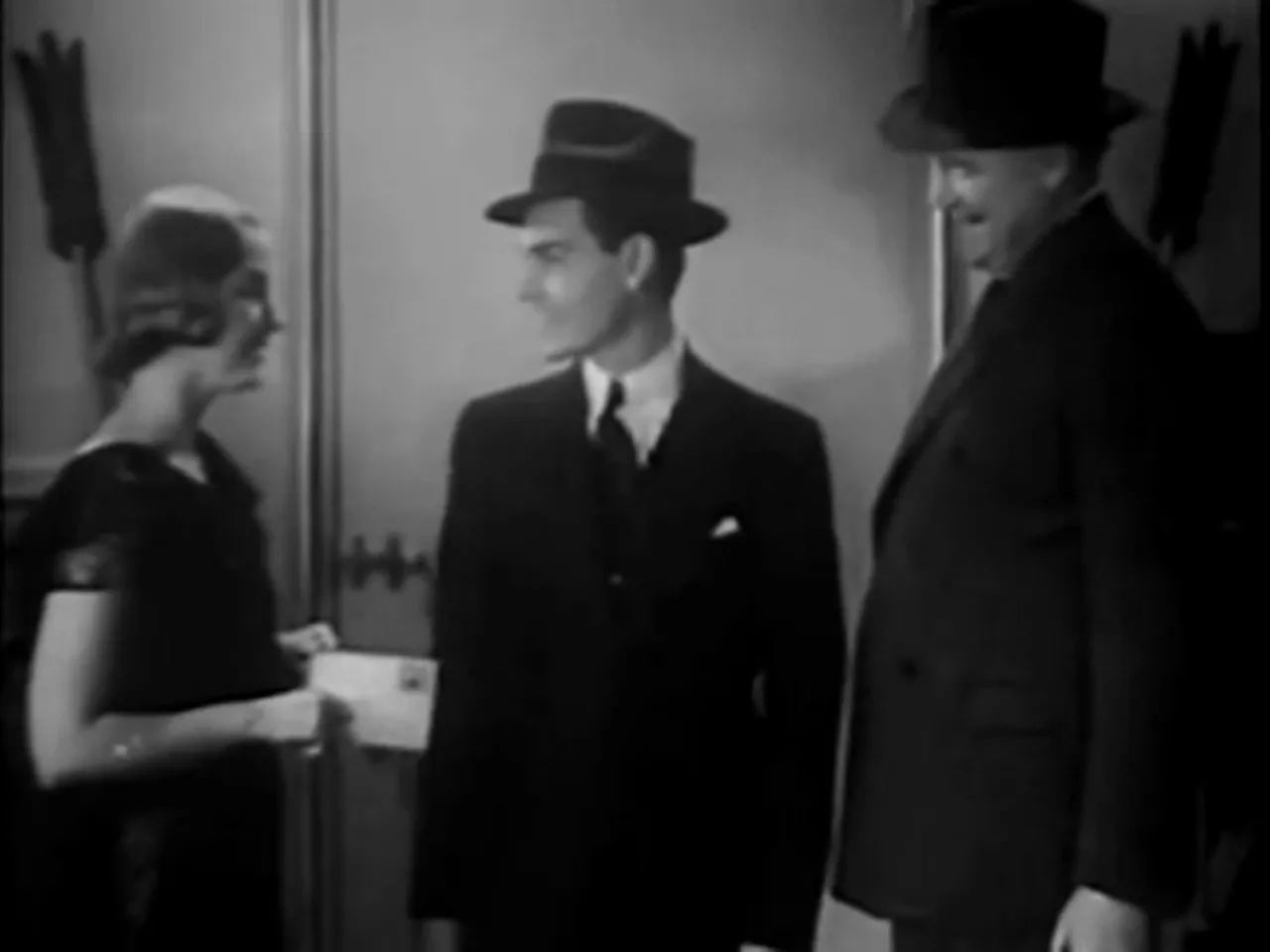
Closing judgment: why The Mandarin Mystery matters to classic cinephiles and noir readers
The Mandarin Mystery is an exemplar of the efficient, puzzle-driven 1930s mystery. It is compact, smartly plotted, and formally tidy. The film’s particular strength lies in its ability to translate the logic of book-bound detection into theatrically staged cinematic solutions. The stamp—its theft, reproduction, and symbolic reversal—anchors the story in a network of value and visibility that amplifies moral tension. When viewed with an ear to the film noir movie lineage, the picture reveals anticipatory traits: moral confusion, the weaponization of ordinary objects, and the public circulation of private crime. These affinities suggest that even before noir’s visual codification, American cinema cultivated thematic and narrative strategies that would later be recognized as noir’s ancestors.
For the classic cinema critic, The Mandarin Mystery is valuable not because it revolutionizes the medium but because it illuminates the small ways in which genre conventions evolve. The film offers a concentrated study of how plot mechanics, stagecraft, and detective ingenuity can create a satisfying cinematic puzzle. It remains a worthy title for collectors, students of Ellery Queen adaptations, and viewers interested in tracing the prehistory of the film noir movie sensibility.
Practical viewing notes and final recommendations
Recommended audiences: enthusiasts of Golden Age mysteries, Ellery Queen devotees, and viewers interested in the archival development of noir-adjacent motifs. The film rewards attention to detail: stamps, catalogs, and small props matter; the script repeatedly turns attention back to objects as sources of evidence. On first viewing, allow the plot to unfold; on second viewing, attend to the mise-en-scène—a reversed coat, a speared prop, a hidden stamp behind a picture—because these are the film’s essential communicative devices.
Viewing context: consider watching The Mandarin Mystery in a double bill with a later noir classic to observe continuities and contrasts. While the film is not a film noir movie by historical designation, juxtaposition can make the lineage visible: clarity versus chiaroscuro, puzzle-play versus psychological fatalism, and public demonstration versus interior monologue. Such a comparison illuminates the shifting priorities of American crime cinema across decades.
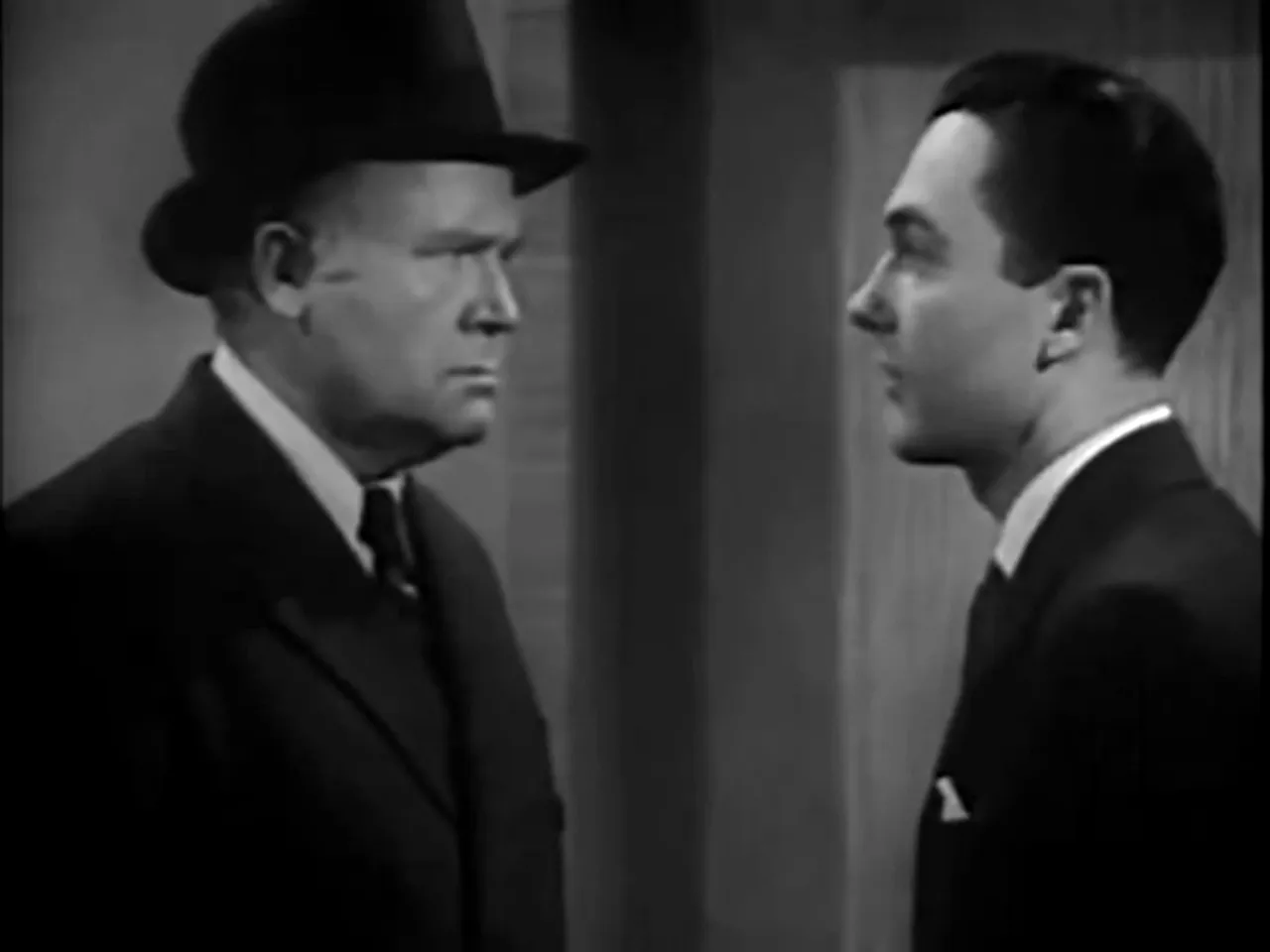
Where to access
The film is listed in classic film archives and may be available on public domain platforms where historical titles are preserved. It is catalogued on major film databases, and archival copies circulate among collectors. For those seeking to study the film, these resources provide the most reliable access points.
Afterthought: what The Mandarin Mystery teaches modern viewers about the making of a film noir movie sensibility
Viewed through a contemporary critical lens, The Mandarin Mystery supplies a set of tactical lessons about how cinematic narratives mobilize objects, spectacle, and alibi to shape moral judgment. It shows how cheap studio productions could nevertheless reach for complexity via plot invention and symbolic staging. More importantly, it reminds modern viewers that the film noir movie sensibility did not appear ex nihilo in the 1940s; rather, it accreted from earlier films that experimented with moral inversion, commodity-driven crime, theatrical misdirection, and detective pedagogy.
The film is a case study in how an apparently conventional mystery can contain darker substrata: the ersatz economy of counterfeiters, the conversion of artistic objects into cash, and the social consequences of perceived value. These concerns continue to animate film scholarship and popular interest in noir and crime cinema. As such, The Mandarin Mystery rewards re-examination as part of a longer continuum that culminates in the sophisticated moral displacements of the film noir movie.
Conclusion: revaluing The Mandarin Mystery within classic crime cinema and the film noir movie genealogy
In closing, the critic urges a revaluation of The Mandarin Mystery. It may be a modest production, but it is precisely in that modesty that the film’s virtues appear: economic storytelling, intelligent staging, and a thematic curiosity about value and imitation. For those tracing the antecedents of noir, the film offers a useful waypoint. It refracts later obsessions—shadowed moral ambiguity, the commodification of beauty, and the theatricality of crime—through the clear lens of a studio mystery. It is, in short, a film that belongs in any considered survey of crime cinema’s evolution toward what would be recognized as a film noir movie.
